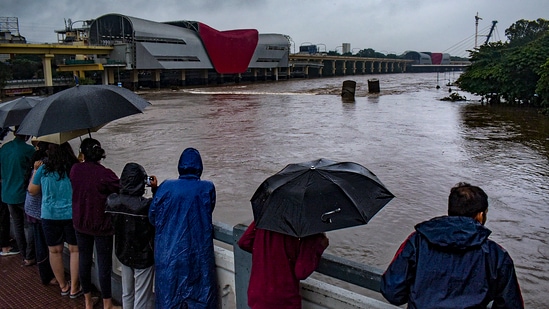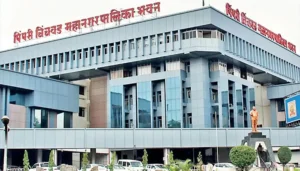Pune Witnesses Season’s Second-Heaviest Rainfall on August 19 Amid Surge in Dam Discharges and Flood Warnings

Pune Witnesses Season’s Second-Heaviest Rainfall on August 19 Amid Surge in Dam Discharges and Flood Warnings
After a subdued start to August, Pune has been drenched over the past two days, marking a dramatic return of monsoon activity. On Tuesday, August 19, the city recorded 41.4 mm of rainfall by 5:30 pm, making it the second-highest single-day rainfall of the season. The city’s wettest day so far this monsoon remains June 13, which saw 55 mm of rain.
This recent spell follows a dry fortnight and has significantly bumped up Pune’s August rainfall total to 88 mm, though it still falls short of the monthly average of 145.5 mm. On Monday, August 18, the city had received 35 mm of rainfall over 24 hours, indicating a consistent rise in precipitation.
Different parts of the city witnessed varying rainfall intensities on August 19. Lohegaon recorded the highest within city limits at 44.8 mm, followed by Chinchwad at 41.5 mm and Pashan at 23.3 mm.
However, it’s the ghat regions surrounding Pune that bore the brunt of the monsoon fury. Several locations in the hills saw extremely heavy rainfall, with Tamhini in Mulshi taluka leading the chart at 320 mm, followed by Davadi in Maval with 225 mm, and Lonavala registering 145 mm in a 24-hour span.
This torrential downpour across the district triggered a sharp rise in dam inflows, particularly within the Khadakwasla dam complex, which comprises four key dams. As a result, water release operations were launched on a large scale starting August 19. Storage at Khadakwasla dam jumped from 53.12% on August 18 to 86.99% by 5:30 pm the next day, prompting an increase in water discharge from 1,600 cusecs to 35,310 cusecs by 7 pm.
Simultaneously, Panshet dam released 12,308 cusecs, while Warasgaon dam discharged 12,416 cusecs, leading to a massive cumulative outflow into the Mutha river. Authorities have since issued advisories urging residents in low-lying downstream areas to remain on alert for possible flooding.
According to Mohan Bhadane, sub-divisional engineer from the irrigation department, “With heavy rainfall in the ghats, dam inflows have surged dramatically, requiring immediate discharge to prevent overflow and manage flood risk. These releases will be adjusted based on rainfall and inflow trends.”
In parallel, Ujani dam has also begun releasing water, driven by inflows from upstream. A discharge of 41,600 cusecs has been initiated here, with warnings issued for villages situated along downstream rivers.
Adding to the concern, the Koyna dam in Satara district has also started large-scale releases due to persistent downpours in its catchment area. On August 19, six radial gates of the dam were raised from 11 feet to 12 feet, facilitating a powerful outflow of 87,000 cusecs into the Koyna river. Alongside this, its hydropower generation units have added another 2,100 cusecs, taking the total outflow to 89,100 cusecs. People living along the Koyna riverbanks have been put on high alert for potential flooding.
As heavy rainfall continued through August 19, meteorologists from the India Meteorological Department (IMD) forecast a reduction in rainfall activity starting August 20. While a red alert remains active for Pune’s ghat regions and Raigad district on August 20, rainfall is expected to ease significantly across most of Maharashtra from August 21 onward.
An orange alert is in effect for the coastal belt, as well as the ghats of Nashik, Satara, and Kolhapur, and the districts of Thane and Palghar, signaling the possibility of heavy showers. Meanwhile, Vidarbha will remain under a yellow alert for the next 24 hours.
S D Sanap, senior meteorologist at IMD Pune, stated, “The ghat areas of Pune will remain under a red alert on August 20, followed by an orange alert on August 21. As for Pune city itself, there are no major alerts post August 20, and rainfall is expected to subside in the coming days.”
Officials reiterated that the ongoing dam releases are crucial for flood control and water management, especially given the intensity of rainfall in catchment zones. However, the situation highlights the vulnerabilities tied to extreme weather events—particularly for riverbank communities and rapidly urbanising zones.
Experts have pointed out that while the heavy rainfall has ensured adequate reservoir levels, providing a much-needed boost to urban water security, it also throws light on the fragile balance between infrastructure, urban expansion, and environmental planning. Unchecked development, poor drainage, and encroachment on natural floodplains continue to increase Pune’s susceptibility to flooding during such extreme monsoon phases.









